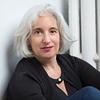Take a photo of a barcode or cover
Compelling story of a young Jewish immigrant boy growing up in turn of the century New York to an abusive father, coddling mother, and the new American landscape that seems to stamp the Old World and former way of being out of everyone. "I pray thee ask no questions, this is that golden land."
It was a little bit too much "I want to be James Joyce but in New York" for me.
This is an intense book. I'm reading up on the 1930s, and this novel, first published in 1934, is about a young Jewish boy on the Lower East Side of New York City. The book is a classic and it's easy to see why: Roth immerses you completely into his world and his language and writing are magnificent. Reading about a place I know so well yet in a different time is stunning--it's so hard to believe the Lower East Side (East Village/Alphabet City today) has changed so radically in fewer than 100 years. I enjoyed this book most when seeing David's day-to-day life. The stream-of-conciousness of David completely captures him as a real person. The process of assimilation as seen through David was fascinating to me.
Yet, it's a VERY difficult book to read both because it's a dark book and also because the dialogue is often hard to read (literally). When the characters are speaking in Yiddish (written in English), the writing is melodic. But when the characters speak English, the writing is difficult to muddle through. I had to read some of the English out loud to hear what was being said. And some writing is transliterated Yiddish, which I missed completely (except when my German-speaking husband was around, as he was able to make the meaning from the sentences). And some of the content went over my head, as I don't have a knowledge of English to know when a joke is being made (it wasn't until reading the notes after that I realized that some of the sentences I didn't understand were puns, as the Yiddish word sounds like a completely different English word). I know there are many levels of this book that I didn't even understand, but the ones that I did really taught me a lot.
This is not a book to be read lightly. It took me a loooong time to get through this, but I would definitely say it was worth it.
Yet, it's a VERY difficult book to read both because it's a dark book and also because the dialogue is often hard to read (literally). When the characters are speaking in Yiddish (written in English), the writing is melodic. But when the characters speak English, the writing is difficult to muddle through. I had to read some of the English out loud to hear what was being said. And some writing is transliterated Yiddish, which I missed completely (except when my German-speaking husband was around, as he was able to make the meaning from the sentences). And some of the content went over my head, as I don't have a knowledge of English to know when a joke is being made (it wasn't until reading the notes after that I realized that some of the sentences I didn't understand were puns, as the Yiddish word sounds like a completely different English word). I know there are many levels of this book that I didn't even understand, but the ones that I did really taught me a lot.
This is not a book to be read lightly. It took me a loooong time to get through this, but I would definitely say it was worth it.
challenging
emotional
informative
tense
medium-paced
Plot or Character Driven:
A mix
Strong character development:
Yes
Loveable characters:
Yes
Diverse cast of characters:
No
Flaws of characters a main focus:
Yes
Gorgeous prose, and an amazing portrait of a young immigrant boy's interior life; Roth does a great job of evoking spaces and sounds. In the end, however, it's a work I admired more than a work I liked.
challenging
funny
sad
tense
slow-paced
Plot or Character Driven:
Character
Strong character development:
Complicated
Loveable characters:
Yes
Diverse cast of characters:
Yes
Flaws of characters a main focus:
Yes
Library renewals are a wonderful thing. I started reading this nearly six weeks ago, (For comparison, Delaney’s Dhalgren only took me three.) and I think--buddy reads notwithstanding--this is the longest I’ve ever spent on a work of fiction.
Call it Sleep is the story of the young David Schearl, an immigrant Polish Jew on the Lower East Side of NYC between 1911 and 1913. Caught between his love for his mother, his fear of his violent father, and the degradation of slum life, it is ultimately a story about adaptation, assimilation, and rebirth. That’s a poor description, but further summary without spoilers is improbable so I’ll move on.
I understand that this is widely considered a masterpiece of modern literature. Critically speaking, I get it, and on some level I even agree, but the vast temporal and cultural gap between myself and Henry Roth (rendered still-wider by the dialect and 1910s colloquialisms that dominate the text) leaves my appreciation mostly intellectual. Except for the last section, it didn’t resonate with me.
The writing itself alternates between three modes. First, the straightforward prose of David’s Yiddish-speaking home. Second, the dialogue-heavy language of the street. Finally, the embellished language of David’s solo walks and daydreams, which also inserts itself in the midst of the other two.
Normally, I don’t mind well-written dialect in books. But Call it Sleep was a challenge. I found myself reading many pages under my breath to parse the ‘street’ dialogue, which is rendered in direct phonetic transcription. While intellectually fascinating, and an ingenious way of distancing the reader from their own native tongue, it made for a frustrating reading experience; any time that David was out and about the text ran something like this:
At the other extreme, when David is alone, the writing shifts into a high-literary register. Often, these come as walls of text, but they still make for beautiful reading. One of my favorite examples comes when David climbs onto the rooftop of his tenement building:
I’ll admit, I like the last mode best. It’s wordy, but interesting, and Roth does a good job capturing the frenetic imagination of David’s six- to eight-year-old existence. I remember that kind of loosely-associated perception of the world; it’s hard to write, but Roth succeeds. I still can’t say that I enjoyed the book, but there’s a fair bit of imagery that’s going to stick.
Conclusion: While a very interesting and valuable portrait of Jewish immigrant life, and also a livable depiction of NYCs Lower East Side c.1910… I am so very glad to be done with this. At this stage in its existence, Roth’s novel is an artifact, and I don’t love the setting enough to bridge the gap.
Call it Sleep is the story of the young David Schearl, an immigrant Polish Jew on the Lower East Side of NYC between 1911 and 1913. Caught between his love for his mother, his fear of his violent father, and the degradation of slum life, it is ultimately a story about adaptation, assimilation, and rebirth. That’s a poor description, but further summary without spoilers is improbable so I’ll move on.
I understand that this is widely considered a masterpiece of modern literature. Critically speaking, I get it, and on some level I even agree, but the vast temporal and cultural gap between myself and Henry Roth (rendered still-wider by the dialect and 1910s colloquialisms that dominate the text) leaves my appreciation mostly intellectual. Except for the last section, it didn’t resonate with me.
The writing itself alternates between three modes. First, the straightforward prose of David’s Yiddish-speaking home. Second, the dialogue-heavy language of the street. Finally, the embellished language of David’s solo walks and daydreams, which also inserts itself in the midst of the other two.
Normally, I don’t mind well-written dialect in books. But Call it Sleep was a challenge. I found myself reading many pages under my breath to parse the ‘street’ dialogue, which is rendered in direct phonetic transcription. While intellectually fascinating, and an ingenious way of distancing the reader from their own native tongue, it made for a frustrating reading experience; any time that David was out and about the text ran something like this:
“G’wan tell ‘im,” someone urged.
“I wuz dere too!” another put in.
“Waid!” Kushy hastily cautioned them. “My brudder!” And leaning out so he could view both wings, “Hey youz kids, gid odda hea. G’wan!”
“Naa!” The six year olds at either wing blustered. “Skidoo!”
“Street ain’ yours!” stubbornly.
“Wann ged a lam onna eye?”
“I’ll tell mama,” one of the juniors threatened.
“I’ll give yuh now!” Kushy half-rose.
Sulkily, they slid along the curb a few feet away from the rest. [273]
At the other extreme, when David is alone, the writing shifts into a high-literary register. Often, these come as walls of text, but they still make for beautiful reading. One of my favorite examples comes when David climbs onto the rooftop of his tenement building:
The immense heavens of July, the burnished, the shining fathom upon fathom. Too pure the zenith was, too pure for the flawed and flinching eye; the eye sowed it with linty darkness, sowed it with spores and ripples of shadow drifting. (--Even up here dark follows, but only a little bit) And to the west, the blinding whorl of the sun, the disk and the trumpet, triple-trumpet blaring light. He blinked, dropped his eyes and looked about him. Quiet. Odor of ashes, the cold subterranean breath of chimneys. (--Even up here cellar follows, but only a little bit) And about were roof-tops, tarred and red and sunlit and red, roof-tops to the scarred horizon. Flocks of pigeons wheeled. Where they flew in lower air, they hung like a poised and never-raveling smoke; nearer at hand and higher, they glittered like rippling water in the sun. Quiet. Sunlight on brow and far off plating the sides of spires and water-towers and chimney pots and the golden cliffs of the streets. To the east the bridges, fragile in powdery light. [276]
I’ll admit, I like the last mode best. It’s wordy, but interesting, and Roth does a good job capturing the frenetic imagination of David’s six- to eight-year-old existence. I remember that kind of loosely-associated perception of the world; it’s hard to write, but Roth succeeds. I still can’t say that I enjoyed the book, but there’s a fair bit of imagery that’s going to stick.
Conclusion: While a very interesting and valuable portrait of Jewish immigrant life, and also a livable depiction of NYCs Lower East Side c.1910… I am so very glad to be done with this. At this stage in its existence, Roth’s novel is an artifact, and I don’t love the setting enough to bridge the gap.
It was a day in that season when the sun bolsters a fallen wing with a show of soaring, a day of heat and light. Light so massive stout brick walls could scarcely breast it when it leaned upon them; light that seemed to shiver windows with a single beam; that crashed against the careless eye like rivets. A day when clouds played advocates for pavements, stemming the glare on tenuous bucklers, growing stainless with what they staunched. A day so bright that streets would slacken when shaded momentarily, facade and wall would slump as if relaxing, gather new strength against new kindling. It was late July.



